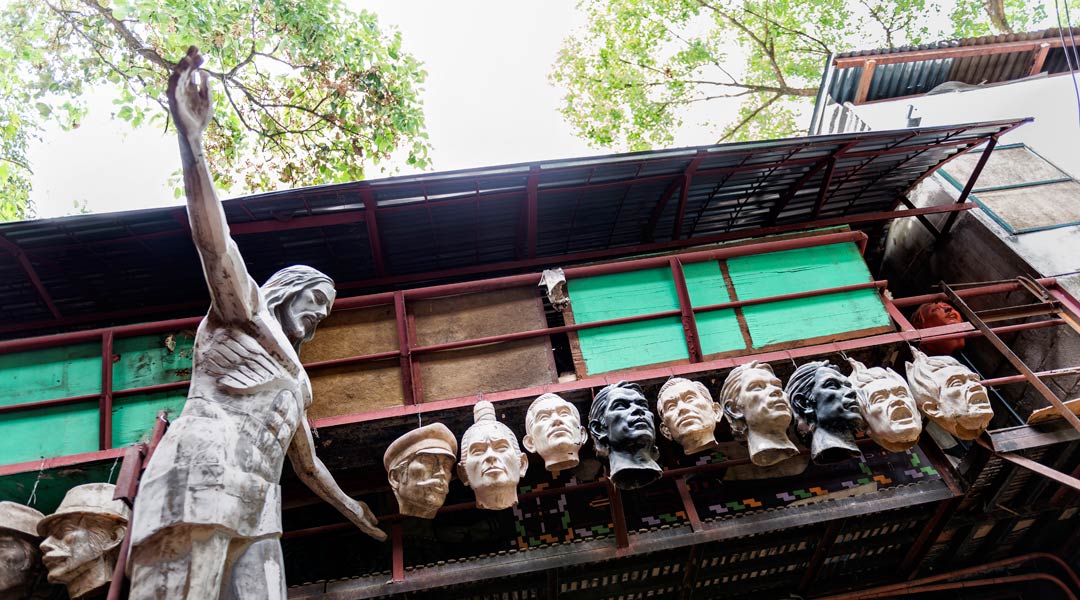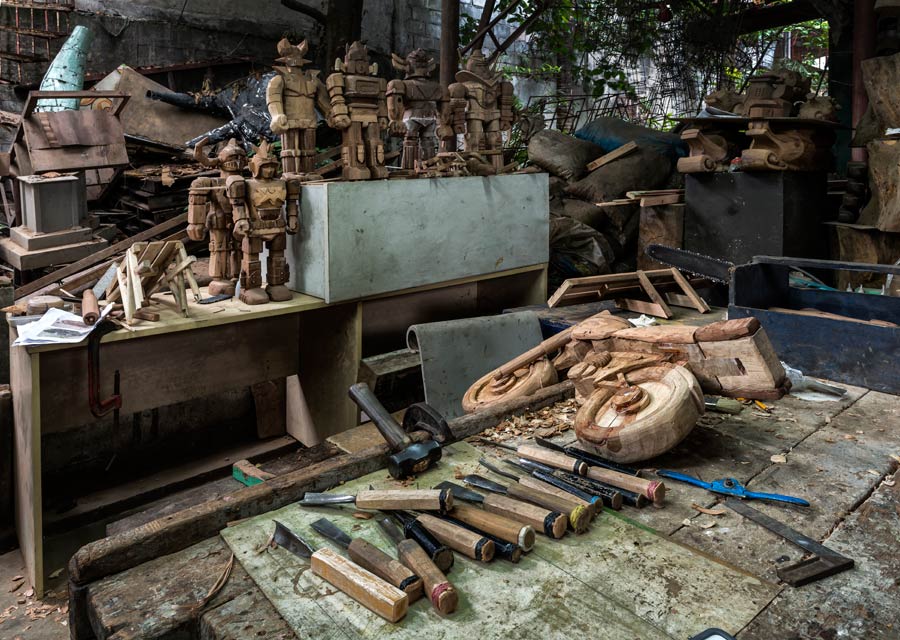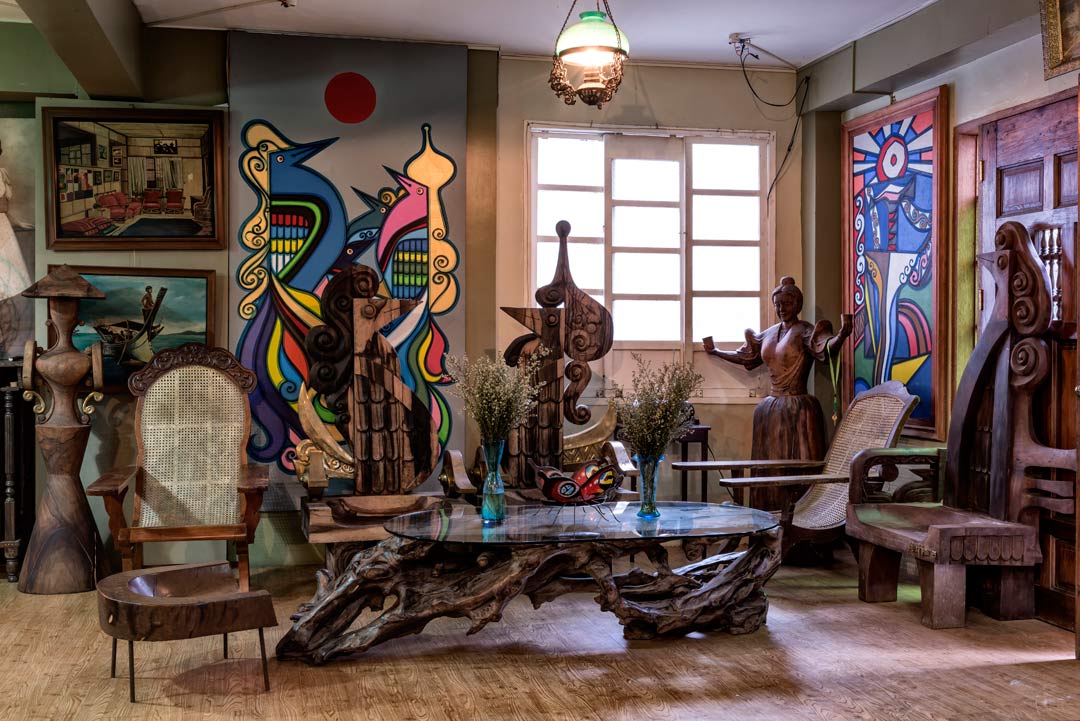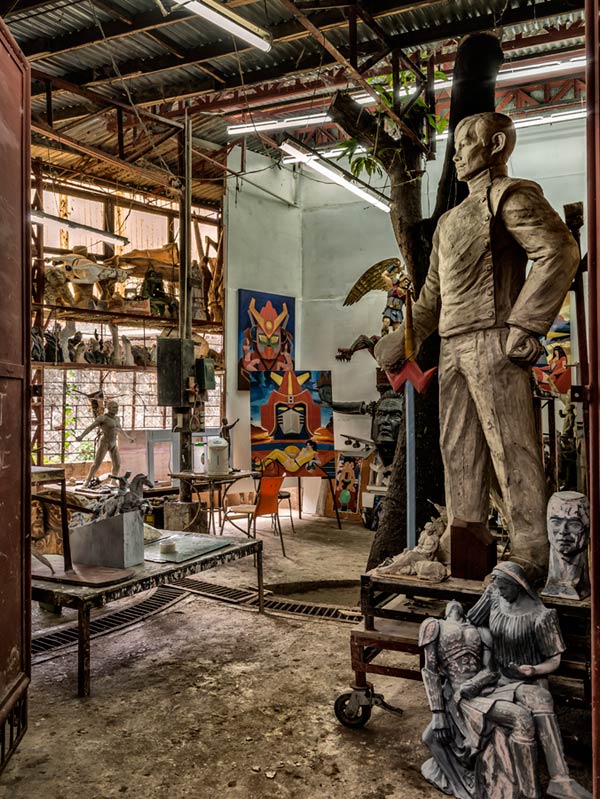
The prolific life and house-studio of Abdulmari Imao
“An unlikely success” best describes the heroic life and works of the late National Artist Abdulmari Imao. The twin burdens of poverty and belonging to an often-feared ethnic minority did not put down this energetic and artistically intellectual man.

Born to an impoverished Tausug couple in Jolo, Sulu, on 14 January 1936, Abdulmari’s original surname was Allih. His Arabian lineage stretches back to Medina on the Red Sea coast. When Abdulmari was a child, two of his sisters died, and after consultation with the local imam, it was decided that for good luck, his surname would be changed to incorporate his mother’s full name, Asia Imao. This early family tragedy also persuaded his parents to give up young Abdulmari to his maternal uncle, the guerrilla and war hero Captain Abdulrahim Imao.
Encouraged by his new father to learn, Abdulmari Imao finished at the Sulu Trade School, all the while working hard to earn this education by selling icedrops, ginataan, and peanuts in movie houses; as a stone breaker in road construction; and as a stevedore in the Jolo pier.


Even then, his artistic precocity was evident. In the absence of paper and pencil, he would draw on leaves of dapdap and banana. His love for the exuberant abstract decorations found expression in his early drawings of ukkil, the delicate, vine-like curvilinear designs found in every facet of Tausug life, from boat and house facade carvings, to mosque decorations, tapestries and cloth, and even weapons—the famed wavy patterns of the kris sword edge being the most typical. To augment his meagre income, he began carving furniture at the Sulu Trade School.
Imao was introduced to Philippine Art through the fortuitous arrival at the Jolo pier in 1954 of a “floating exhibition” by the Art Association of the Philippines. There, he was noticed by then-AAP secretary Tomas Bernardo, who encouraged Imao to seek his fortunes in Manila.
Imao arrived in the capital city with only the clothes on his back. Staying in Tondo and working as Bernardo’s handyman, Imao applied for the entrance exam at the UP School of Fine Arts. Recommended by his professors, Abdulmari approached President Ramon Magsaysay for a pensionado grant as a Moro student. Though he did not get the grant that year, his perseverance drew the attention of Magsaysay’s personal secretary Jose Ma. Ansaldo, who paid for his school fees. Ansaldo eventually secured the pensionado grant, and through donations from other kind teachers, Imao flourished under mentors like Anastacio Caedo and Napoleon Abueva. Imao also became an accomplished photographer and staffer of The Philippinensian, UP’s now-defunct annual yearbook.

All Imao’s early bust portraits exuded a strongly naturalistic and sympathetic depiction of their sitters. Incidentally, sculpting the human figure is at odds with the Islamic stricture against reproducing the human figure, called taswir, since it is argued that only Allah can make the human figure. In his defense, Koran scholars from Mindanao and the University of Cairo argued that Imao had not broken any Islamic laws, for the prohibition is against the worship of idols, and not at all forms of art as an expression of the artist.
Imao’s gratitude to the Philippine state and his secular education at the UP likewise allowed him the intellectual liberalism to pursue articulation of the human figure in art. To Imao, the human figure represents the pinnacle of achievement of the human race, and his admiration for the human spirit inspired him to focus much of his sculpture on historical figures and national heroes.
At the same time, he did not discard his Tausug and Moro aesthetic but re-explored and cultivated it. Coupled with an intellectual rigour and experience with Modernism, he would begin to produce a wonderfully Filipino fusion of Eastern mystical and ornamental design with Western technique. This he continued to pursue in postgraduate work at the University of Kansas, the Rhode Island School of Design, and Columbia University from 1960-1963, where he studied advanced brass-casting, creative sculpture, ceramics and advanced photo-chemistry.

Returning to the Philippines in 1964, Imao taught at the University of the East School of Fine Arts, and after receiving the Ten Outstanding Young Men (TOYM) award in 1968, went full-time into sculpture. It was in UE where he met his greatest love, the former Grace de Leon from Sto. Tomas, Pampanga. The union of Muslim Tausug and Catholic Pampangueña brought forth four talented sons: Abdulmari “Toym” Junior, Jose Mari or Joey, Juan Sajid and Alkarim or Kim.
Working on the motifs of Muslim Mindanao since the Sixties, Imao achieved renown as the foremost designer of the sarimanok motif. He integrated the form of the sarimanok and the fish on its beak or claws as integral elements of his paintings and sculpture.
His later mystical treatment of Islamic motifs, particularly in the calligraphic sculptural works called the Allah series, mixed with other Islamic symbols like the crescent moon and five-pointed star, has brought Imao full circle back to his Muslim roots. Abdulmari Asia Imao passed away in his Marikina home on 16 December 2014.
Imao’s heroic life as a Moro is celebrated by the mainstream Philippine community due to his unquestionable love for country, his openness and acceptance of the other faiths of fellow Filipinos, his ability to think beyond narrow prejudices, and look at the profound ties that connect all of God’s beautiful creations into a harmonic whole. In this, Imao’s contribution to Philippine Art is not merely aesthetic, but also profoundly human. ![]()
This article first appeared in BluPrint Vol 3 2014. Edits were made for Bluprint online.
Photographed by William Ong


